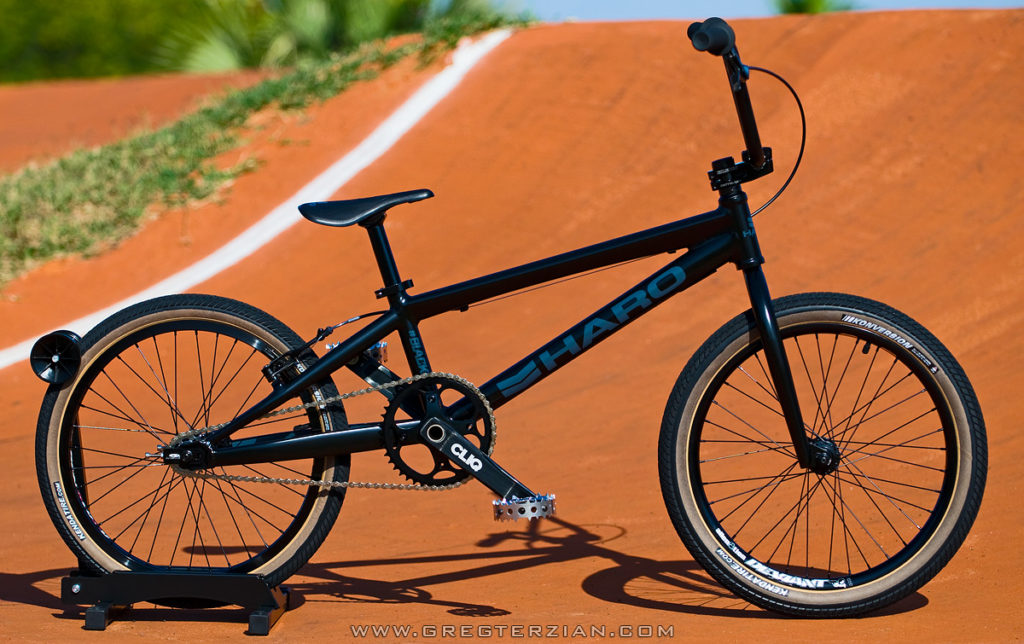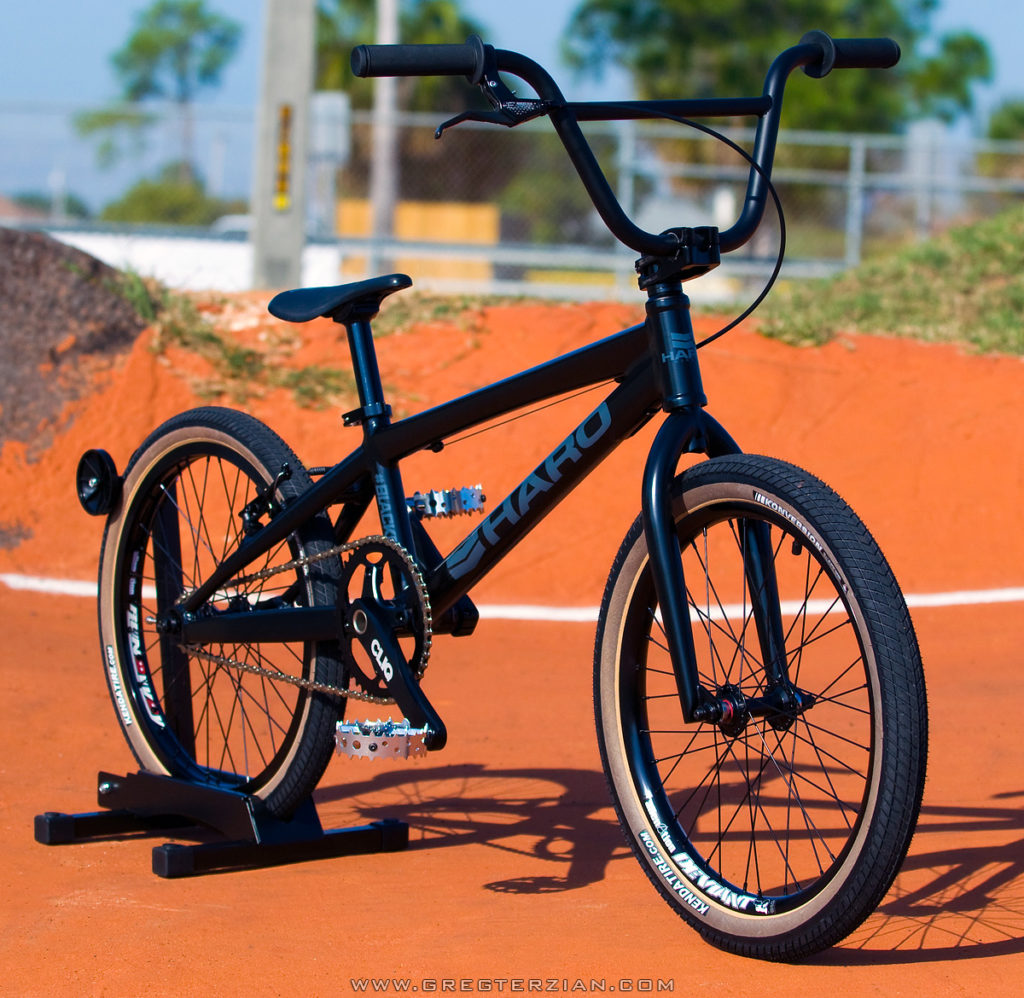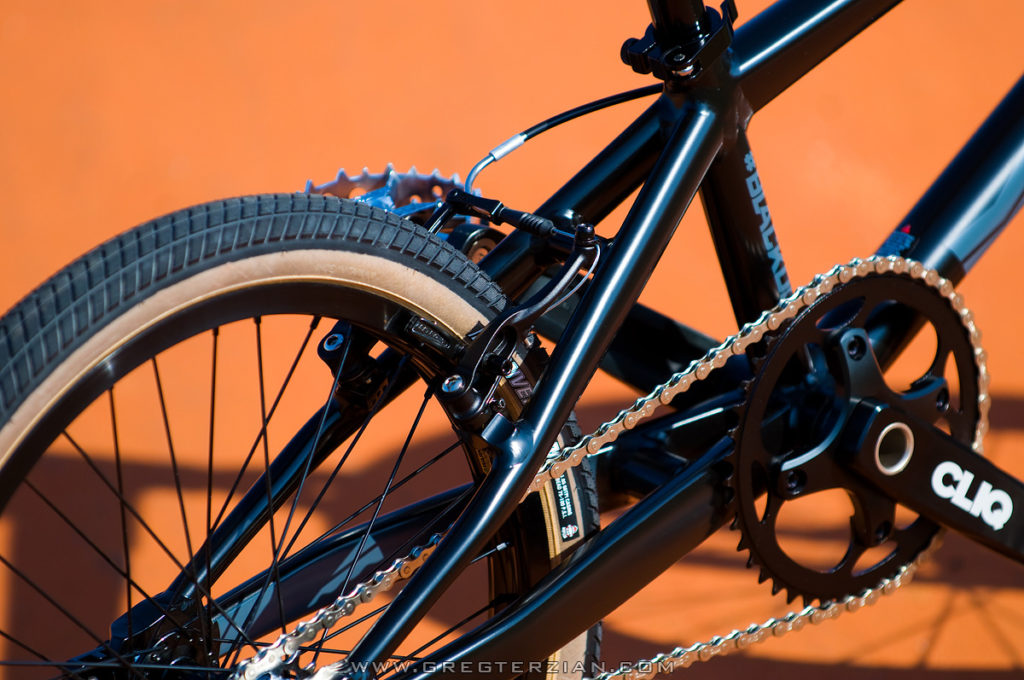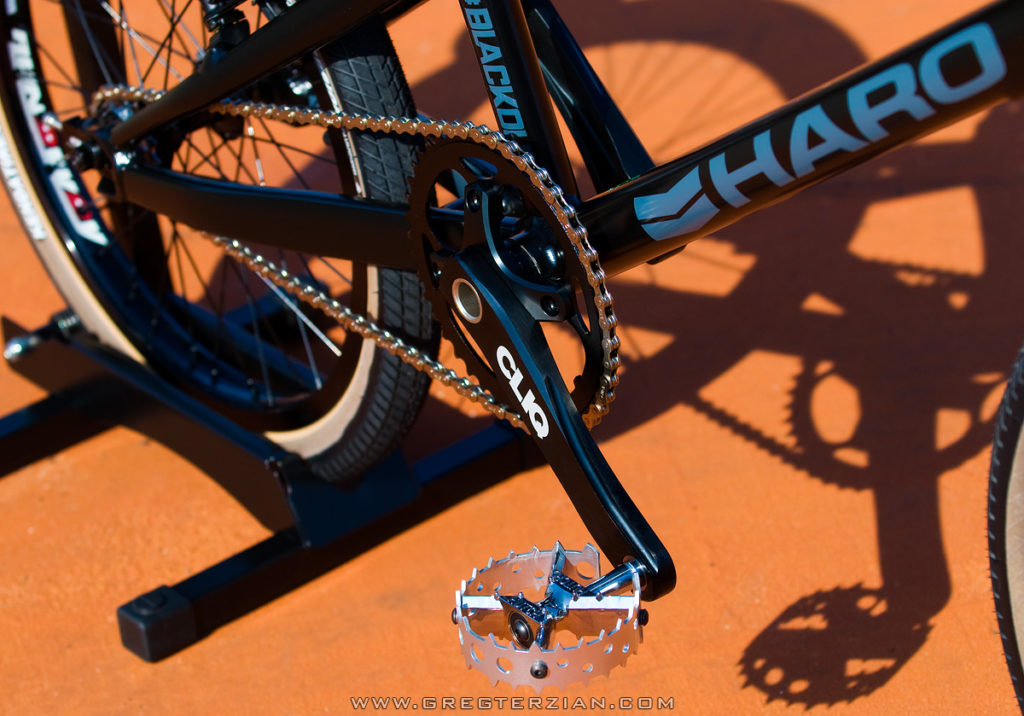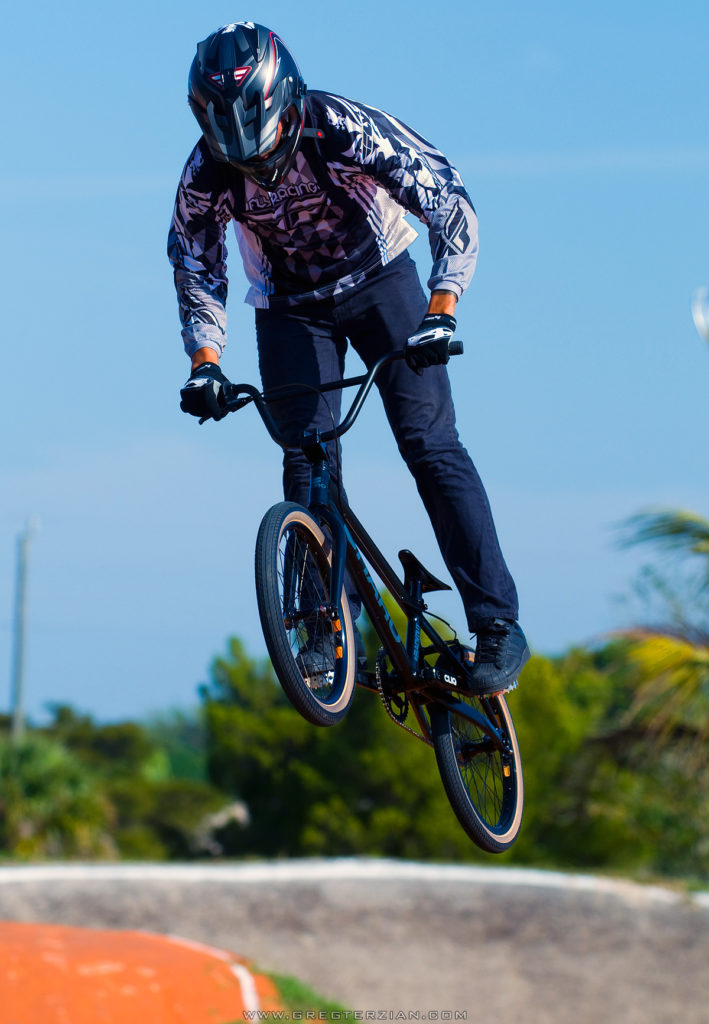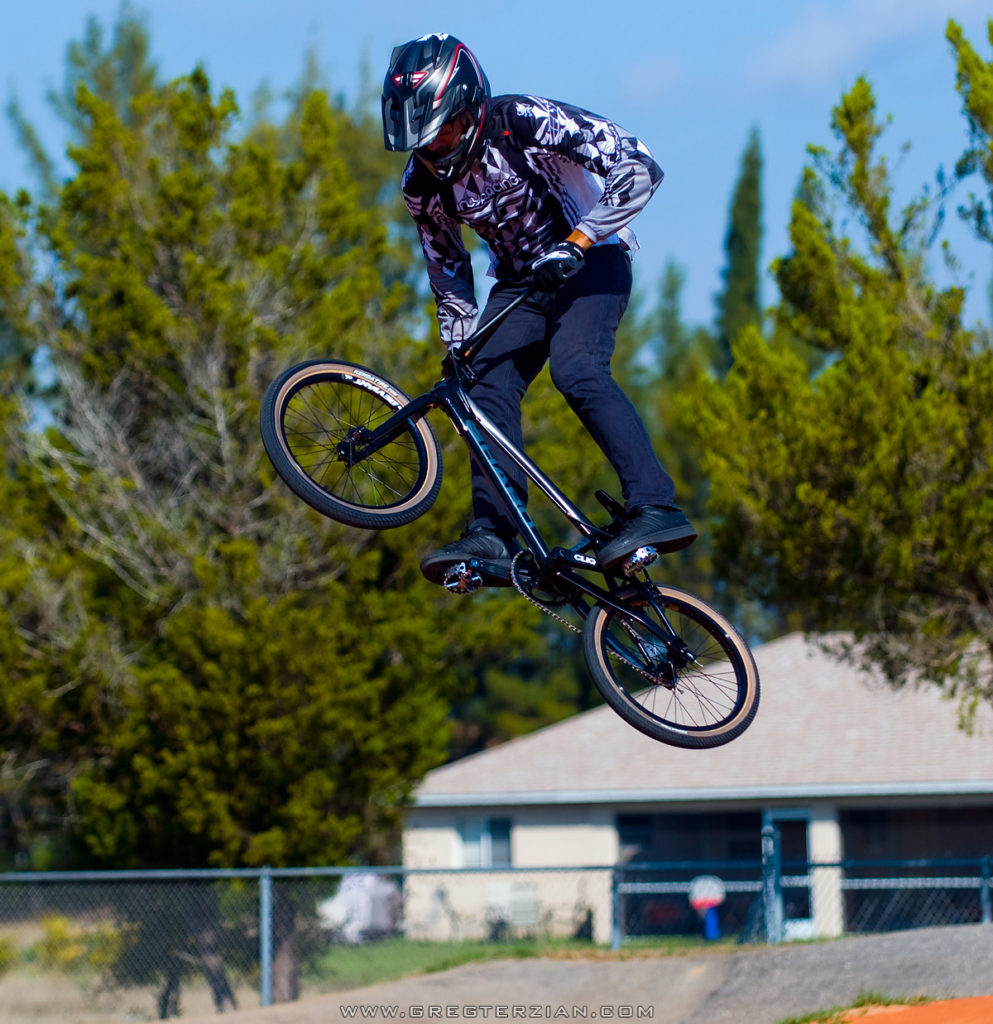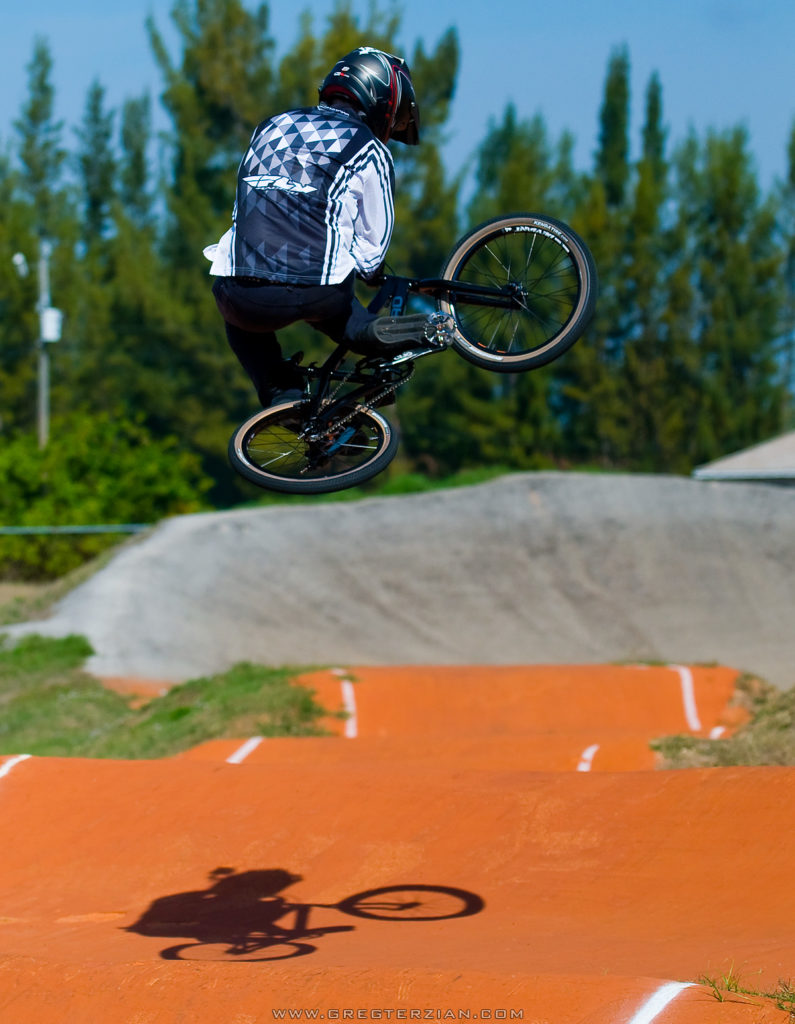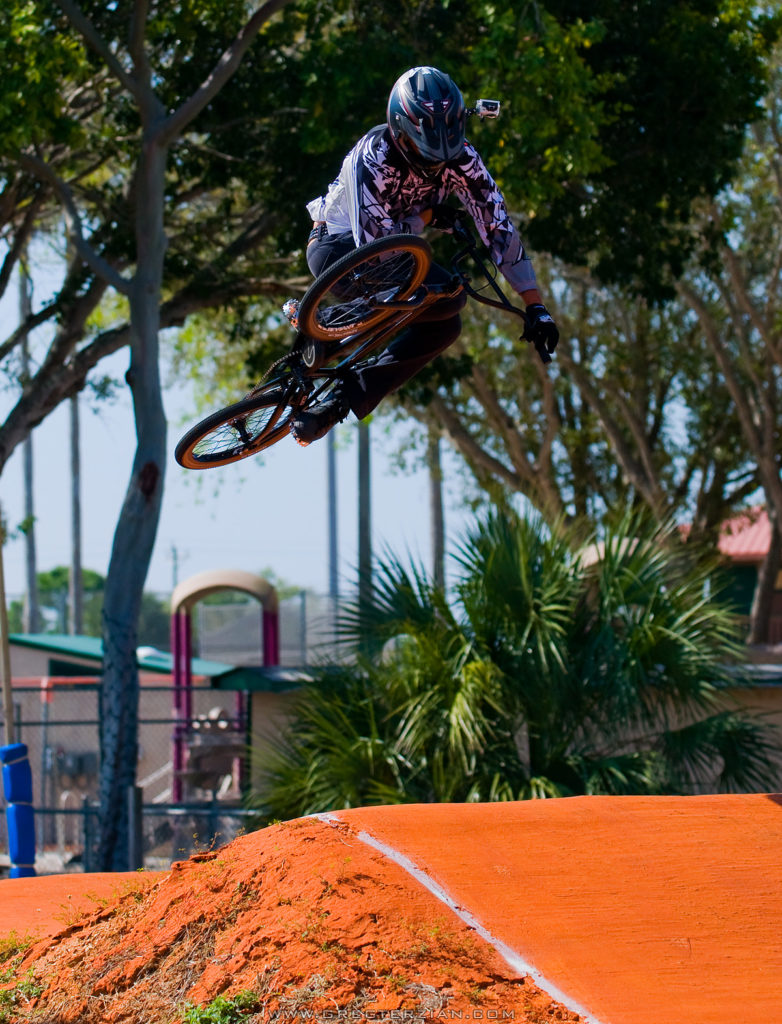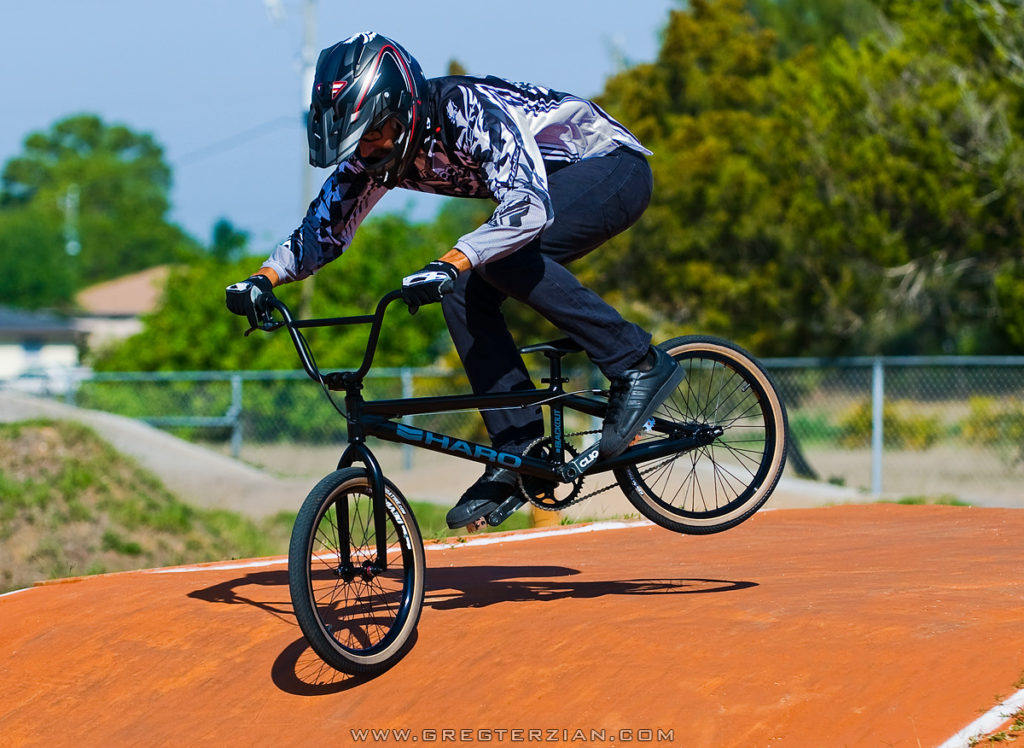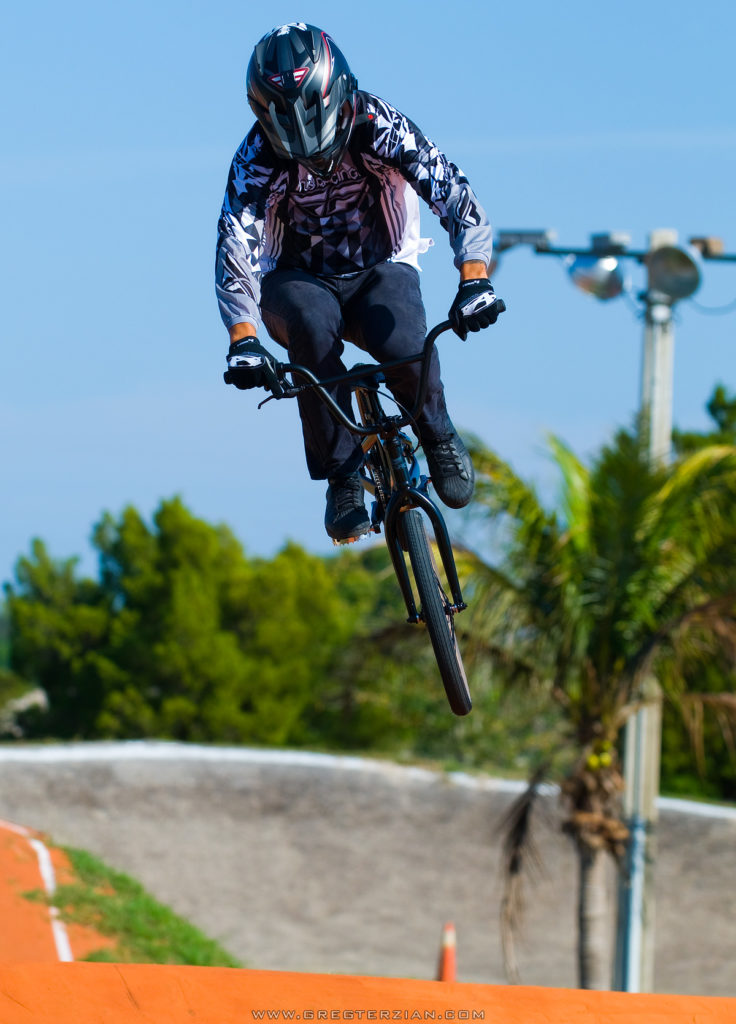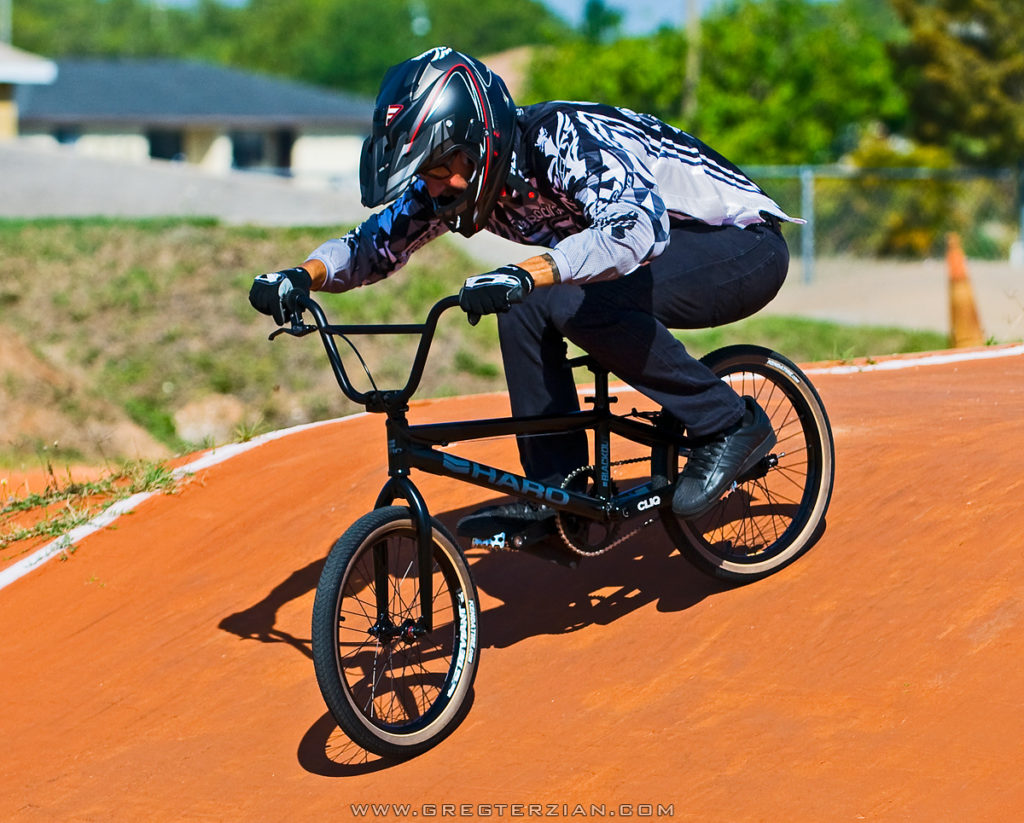It was not very long ago that complete, ready-to-ride BMX race bikes were basically a foot in the door to racing, so to say, and the quality of the components were generally mediocre with the occasional high-end part included on the top-of-the-line models. That in itself was not such a bad thing, since complete race bikes get you right into the game without having to purchase a frame and individual parts – something that beginners and the more casual riders would generally prefer not to do.
During the last few years, complete race bikes have been undergoing a metamorphosis that is blurring the boundary between truly custom-built bikes and the one-box solution that you can build within fifteen minutes and take straight to the track and race. Manufacturers such as Haro, Redline, GT and others have been locked in race of their own – to offer increasingly potent and exotic complete race bikes that are truly purebred race machines. These bikes are now using the very same frames that the factory pros are racing with, and in many cases, the same components.
When I evaluated the Haro Team Issue in 2008, it was a revelation; the bike was built with third-party, high end components and an anodized color treatment that certainly gave the bike a custom-built posture. Not only did it look fast, but the parts were very well matched to the frame, resulting in a bike that rides as well as anything that I could have built up. There were no mystery-brand ‘filler’ parts on that bike – it was pure business.
Haro has been evolving their top-end complete bikes into what became a seriously incredible no-compromise race machine: the 2011 Race Lite. Continually pushing race bike design to new levels, Haro gave the Race Lite a lean, no-nonsense frame that was a bold departure from the Team Issue’s frame design, as well as a component set that matched its performance potential. When I tested that bike, I knew Haro was really serious about its race program. The Race Lite’s geometry was so well balanced that the bike almost felt like it could ride itself (you know that feeling when a bike setup is just right), and the new, box-beam rear triangle was the most solid design from Haro to date. It was plainly obvious that Haro’s frame design was the culmination of experience from their pros, rather than just using a standard-geometry cookie-cutter design.
So what does Haro do when they have an excellent complete race-ready solution in the Race Lite? They start over and make it even better, of course. Haro is very serious about race bike technology, and what is borne of that relentless and aggressive prosecution of improvement is the 2013 Blackout – something entirely new, and entirely vicious in every respect. Now let’s get down to business.
The Haro Blackout, or #Blackout as it is labeled, is a completely upgraded design over the Race Lite. Although it shares much of the same geometry as its predecessor, the frame construction is completely upgraded. Finished in an aggressive semi-gloss black, the Blackout frame is totally new, and the bike features exceptional componentry, culminating in a race-ready, pro-level ride right out of the box. The Blackout will not have you feeling the need to replace any component before lining up at the gate, and the bike’s exceptional track performance underscores that notion.
Haro’s own AA-Pro Derek Betcher designed the Blackout frame from a blank slate, which now includes Haro’s new CLiQ brand of high-end components. Betcher works on Haro’s race products exclusively, and is unquestionably the reason that Haro’s race completes and frames are now among the best in the industry.
As I mentioned, this is an entirely new frame, starting with 7005-series aluminum and an inverted trapezoid-shaped, air-formed top tube that not only adds to overall frame rigidity, but looks plain wicked. The box-beam chainstay design was inspired by the swingarm on a motocross bike, which is very important here, since the chainstay is what directly links the crankset to the rear wheel. Minimizing flex here means more instant power to the rear wheel, especially when the gate drops. The chainstay was shortened a quarter of an inch from the Race Lite, which improves manualing performance.
That new, super-rigid rear triangle really pays off when the bike is ridden very hard. On many frames, it is easy to see how much they are flexing just by looking at the chain slack during hard gate starts and hard acceleration. That is simply power that is lost and not transmitted to the rear wheel. I observed no such flexing with the Blackout. The front triangle has just the right amount of flex to give serious, hard-hitting riders the kind of rebound and feedback that is essential to maximize track performance. During our testing, we became pleasantly aware that Haro recognized the importance of making a frame locked-in where it needs to be, and yet allowing some degree of flex as well. Indeed, Haro achieved this quite well with the Blackout.
You can be sure that Betcher is proud of the result of his work. “The Blackout is the pinnacle of any complete race bike that Haro has ever released. All of our team riders could take this bike right out of the box, and it’s race ready.”, says Betcher.
Betcher’s philosophy of race bike design is very simple: absolute performance first, with nothing extra that serves no purpose. You will not find radical curves, useless tubes, or any other non-essential aesthetic that ultimately does nothing but add weight. But it is that core performance-focused design philosophy that gives the Blackout such an aggressive look. There is no mistaking this bike’s purpose.
The complete version of the Blackout is built up with parts befitting this fantastic frame. Let’s start with the CliQ Weaponz cranks, which are a step above the standard two-piece cranks being offered on many high-end race bikes now. The 180mm Weaponz are fully machined outside with steel pedal inserts. They have a really cool brushed aluminum and anodized black finish, and are compatible with any 24mm external-bearing bottom bracket. The two-piece crankset on last year’s Race Lite was fantastic; the Weaponz, however, are in a class all their own.
The Blackout is available in two sizes; 21 and 21.5-inch top tube lengths. Adding strength while making the frame exceptionally light (under 4 pounds), the top and down tubes are triple-butted, with welds polished nearly smooth – an extra step of workmanship I have never seen on a production race frame before. The semi-gloss black finish really matches the serious attitude of the bike, and all of the graphics are embedded into the paint with no ridges at all.
On the subject of the CliQ components, the Blackout includes their Finisher tapered chromoly forks. The tube taper is pretty radical, becoming dime-sized at the point where the CNC-machined dropouts are welded on. The Finisher forks have an integrated bearing race, further saving weight. Haro includes a bearing race in the parts bag, should you ever decide to install another set of forks – but why would you want to? These forks are among the lightest chromoly forks available at 33 ounces, and they also look extremely rad.
The wheelset is as good as it gets with an Alienation Deviant rim in the front and a Runaway in the rear. The hubs are fully sealed with cartridge bearings and after hours of hard use they rolled as smooth as new with no bearing side-play at all. The 16T cassette cog is matched to a 44T chain ring, which should be a good gear ratio for most people. This setup had no chain-hop or any odd chain-line issues whatsoever. I especially liked the Kenda Konversion skinwall tires, which are rated for 100 PSI.
Also equipped is the same excellent CNC-machined stem we used on the Race Lite and full chromoly eight-inch rise bars. The Tektro V-brake is updated from last year’s design, bearing a strong resemblance to the Shimano DXR design and the very cool carbon lever is well suited for one or two-finger use. Brake performance was excellent and the lever action is smooth and easy.
As is usual with my evaluations I recruited former A-Pro Ryan ‘Z-Man’ Zielinski do much of the riding so I can capture the photos. I wanted this evaluation to be as comprehensive as possible so the Blackout was ridden hard for three hours, performing every possible race maneuver many times. I also wanted to be aware of how the frame behaved during hard use, especially with its very robust rear triangle. The only changes I made to the bike for our evaluation were the addition of a set of chain tensioners (an old habit of always using them) and I swapped the factory front-loading stem out for a top-loader since the Z-Man and I are both over six feet tall and I wanted the extra stem height to be available. Additionally, a set of new Hutch Beartrap pedals is always used for my evaluations since nothing grips like those short of being clipped in. My Beartrap pedals have seen more jumps than I can count and they remain perfect and reliable. I do not think there is a better platform pedal for this application.
It was 85 degrees in South Florida at the Cape Coral BMX track and we had the track all to ourselves to do what we needed. Running the Blackout over and over, it immediately became clear that this is the fastest Haro race bike yet due to its fantastic balance that just begs to be pushed hard.
As Zielinski describes:
“Straight out of the box, the Blackout is easy to handle and it has the ideal amount of stiffness for power riders to put the ponies down, yet it has the right amount of flex for technical riders to get their pump on.”
Indeed, the Blackout is extremely well balanced on the ground and in the air. It does not exhibit any biases to the front or rear – in other words, the bike does not feel excessively light in the front, nor does it feel too heavy. This is important, because a balance bias can really influence your style and performance. The bottom bracket height was right on the money – if it is too high, the bike becomes unstable, conversely, if the bottom bracket is too low, the bike’s handling performance will suffer. No worries here; the cranks felt right where they should be and the 74-degree head tube angle gave this bike the ideal balance between stability and quick handling.
Boosting the front side of a jump rewards the rider with fantastic flight performance; steadfast and proportional. The 15.25-inch chainstay gives the Blackout fantastic stability on the ground, allowing full-throttle crank-spinning speeds in the straights and turns with confidence. The dropout slots are long enough to allow a fairly wide range of adjustment if you prefer a longer or shorter rear end.
So how did the bike hold out after hours of very hard riding? Perfect. The session we had with the Blackout bordered on torture, with constant jumping more than anything and a lot of fun in the process. I wanted very good photos for this article, so that meant dishing it out hard on the bike. The super-stiff Weaponz cranks took all the abuse we could give them without any issues at all, and the same goes for the wheelset, which remained perfectly true. In the end, nothing on the Blackout was tweaked, dented, loosened, or broken. We especially liked the Konversion treads, which roll very smooth with excellent grip. In addition, the 100 PSI capacity naturally reduces rolling resistance without feeling excessively harsh on a soil-tac track surface.
I’m sure this is probably one of the longest BMX product review articles you have ever read. My goal is to provide a comprehensive product review and test for the prospective and serious BMX rider. Zielinski and I thoroughly enjoyed our time with Haro’s latest race machine. My thoughts here are the result of that enjoyment. Fifteen minutes out of the box and the Blackout is totally ready to meet the needs of any level of rider. Zielinski and I have different skill levels, yet we both found instant appreciation with this bike. It inspired confidence in me, and allowed the Z-Man to go all-out with no constraints. Derek Betcher’s work on the Blackout has created a race bike that feels just right in every respect – it does nothing strange or unexpected, and the bike just flows on the track. And it just looks totally rad.
Can Haro top the #Blackout? Given the aggressive progression of their race bike evolution with Betcher at the helm, I know they will certainly try.
It is a good time to be a BMX racer.

